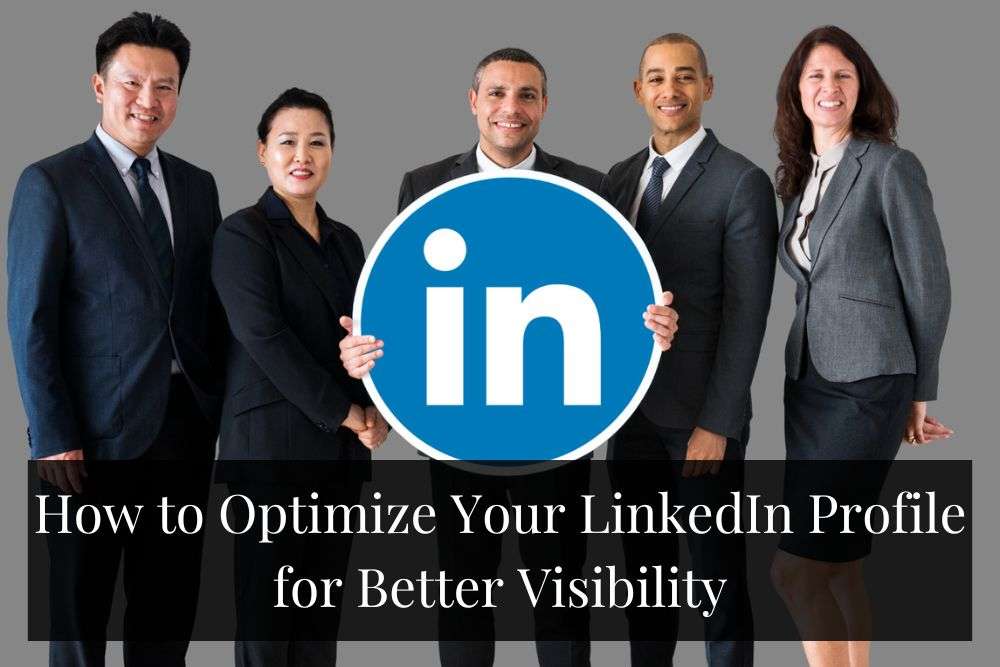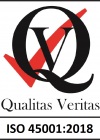In today’s digital age, having a strong LinkedIn presence is crucial for professionals to network, showcase their skills, and advance their careers. Whether you’re creating a new LinkedIn account or looking to enhance your existing profile, optimizing it effectively can make a significant difference in attracting relevant opportunities and connections. In this article, we will guide you through the process of optimizing your LinkedIn profile to maximize its potential.
Understand the Importance of LinkedIn Optimization
When it comes to LinkedIn, optimization goes beyond completing the basic profile information. It involves strategically presenting your skills, experiences, and achievements to create a compelling personal brand. By taking the time to optimize your LinkedIn profile, you enhance your visibility, build credibility, and establish meaningful connections within your industry.
1.Craft a Captivating Headline and Profile Picture
Your headline is the first thing that catches people’s attention on your LinkedIn profile. Make sure it accurately represents your professional identity and incorporates relevant keywords. For example, “Marketing Specialist | Social Media Strategist | LinkedIn Enthusiast.” This not only makes your profile more discoverable but also highlights your expertise.
Similarly, your profile picture plays a crucial role in making a positive first impression. Choose a high-quality, professional-looking photo that reflects your personality and aligns with your industry. A captivating LinkedIn profile picture can significantly impact how others perceive you.
2.Write an Engaging Summary
The LinkedIn summary section provides an opportunity to showcase your unique value proposition. Craft a compelling and concise summary that highlights your skills, experiences, and career aspirations. Incorporate relevant keywords naturally to optimize your profile for search engines. For example, “As an experienced marketing professional with expertise in social media management and content creation, I strive to deliver impactful strategies that drive brand awareness and engagement.”
3.Showcase Your Experience and Education
Your experience and education sections allow you to provide a comprehensive overview of your professional journey. When listing your experiences, include relevant details such as job titles, responsibilities, and notable achievements. For instance, “Digital Marketing Manager at XYZ Company | Led successful LinkedIn campaigns resulting in a 50% increase in lead generation.”
Highlighting your educational background is equally important. Include degrees, certifications, and relevant courses to demonstrate your qualifications. For example, “Bachelor’s Degree in Marketing | Certified LinkedIn Marketing Professional.”
4.Highlight Skills and Endorsements
One of the key features of LinkedIn is the ability to showcase your skills. Add relevant skills to your profile, such as “LinkedIn Optimization,” “LinkedIn Networking,” and “LinkedIn Marketing.” These keywords not only enhance your LinkedIn profile but also increase your chances of appearing in search results when recruiters or potential connections are looking for professionals with specific skill sets.
Encourage colleagues, peers, and mentors to endorse your skills. Genuine endorsements add credibility to your profile and showcase your expertise in different areas. Similarly, endorse others in your network, as this can lead to reciprocal endorsements.
5.Utilize Rich Media to Enhance Your Profile

LinkedIn provides various multimedia features that can make your profile visually appealing and engaging. Leverage these options by adding images, videos, presentations, and links to relevant projects or articles. For instance, include a link to your LinkedIn profile on your personal website or blog, creating a seamless connection between your online presence and professional profile.
6.Expand Your Network
Networking is at the core of LinkedIn’s purpose. Building a strong network not only broadens your reach but also increases your chances of connecting with relevant professionals and opportunities. Actively connect with colleagues, classmates, industry experts, and anyone else who can contribute to your professional growth. Personalize your connection requests to establish a genuine connection, such as “Hi [Name], I came across your profile on LinkedIn and was impressed by your expertise in [specific industry]. Let’s connect and explore potential synergies.”
7.Join Relevant Groups and Engage in Discussions
LinkedIn groups provide a platform to connect with like-minded professionals, share insights, and participate in industry discussions. Search for groups that align with your interests and expertise. Engage actively by sharing valuable content, asking thoughtful questions, and offering your expertise. For instance, if you’re passionate about LinkedIn marketing, join groups like “LinkedIn Marketing Strategies” or “LinkedIn for Business Professionals” to exchange ideas and expand your network.
8.Request Recommendations
Recommendations are powerful testimonials that validate your skills and expertise. Reach out to former colleagues, managers, or clients and kindly request a recommendation. Offer to reciprocate the gesture if appropriate. These recommendations provide social proof and can significantly impact your professional credibility. For example, “Could you kindly provide a recommendation on my LinkedIn profile based on our successful collaboration at XYZ Company?”
9.Publish Thoughtful Content
LinkedIn’s publishing platform allows you to share your knowledge and insights with a broader audience. Write articles or posts on relevant topics within your industry. Publishing quality content helps establish yourself as a thought leader and can attract valuable connections and opportunities. For instance, share your expertise on “Optimizing LinkedIn profile for Career Success” or “Mastering LinkedIn Networking: Tips and Strategies.”
10.Optimize Your URL and Customize Your Public Profile
Customizing your LinkedIn profile URL not only makes it easier to share but also adds a professional touch. Edit your URL to include your name or a variation of it. Additionally, take advantage of LinkedIn’s customizable public profile settings. Customize your profile URL, visibility settings, and the information displayed to ensure you present yourself in the best possible light. For example, “linkedin.com/in/yourname” or “linkedin.com/pub/yourname.”
11.Regularly Update Your Profile
Your LinkedIn profile should evolve as your career progresses. Regularly update it to reflect your latest achievements, skills, and experiences. Keep your profile fresh and engaging by adding new projects, courses, or professional affiliations. This demonstrates your commitment to professional growth and keeps your network informed about your ongoing activities.
12.Use Keywords Strategically
Keywords play a crucial role in LinkedIn profile optimization. Research relevant keywords and strategically incorporate them into your headline, summary, experience descriptions, and skills section. This improves your chances of appearing in search results when recruiters or potential connections are looking for professionals with your specific skill set. For example, “LinkedIn Marketing Specialist | SEO-driven LinkedIn Profiles | Expert in LinkedIn Optimization.”
13.Measure and Track Your Profile Performance
LinkedIn provides valuable analytics to help you understand how your profile is performing. Pay attention to metrics such as profile views, engagement, and keyword appearances. Use these insights to refine your LinkedIn profile further and make data-driven decisions to improve your visibility and networking efforts. LinkedIn Premium members have access to additional analytics that offer deeper insights into profile performance.
As an End Note:
Optimizing your LinkedIn profile is a crucial step towards building a strong professional brand and attracting relevant opportunities. By following the strategies outlined in this article, you can create a compelling LinkedIn profile that captures attention, builds credibility, and opens doors to exciting career prospects. Remember to continuously update and refine your profile to stay relevant in a competitive job market.
Supercharge Your LinkedIn Profile for Maximum Visibility! Unlock Secrets to Optimize Your Profile and Stand Out from the Crowd. Elevate Your Professional Presence Now! Click here to get started.
If you found this article helpful, don’t miss out on these informative reads: “How a Powerful LinkedIn Cover Letter Can Land You Any Job!” and “Maximizing Your Professional Impact with LinkedIn Profile Development“.
Frequently Asked Questions (FAQs)
Can optimizing my LinkedIn profile improve my chances of getting a job?
Yes, optimizing your LinkedIn profile can significantly enhance your job search. It increases your visibility to recruiters, showcases your skills and experiences, and allows you to network with industry professionals.
How can I create an effective LinkedIn resume and CV?
To create an effective LinkedIn resume and CV, focus on highlighting your key achievements, skills, and experiences. Utilize keywords, customize your profile URL, and include rich media to make your LinkedIn profile stand out.
Is it necessary to include my LinkedIn profile link on my resume?
Including your LinkedIn profile link on your resume is highly recommended. It provides recruiters and potential employers with easy access to additional information about your professional background and accomplishments.
Can I optimize my LinkedIn profile if I’m not actively looking for a job?
Absolutely! Optimizing your LinkedIn profile is beneficial regardless of your job search status. A well-optimized profile can attract new connections, networking opportunities, and even unexpected job offers.
How important is it to have a professional-looking profile picture?
A professional-looking profile picture is essential for making a positive first impression. It adds credibility and helps establish trust with potential employers and connections.
Is it necessary to include all my past experiences on my LinkedIn profile?
While it’s not necessary to include every single experience, it’s important to highlight the most relevant and impactful ones. Focus on experiences that align with your career goals and demonstrate your skills and achievements.
Should I publish content on LinkedIn even if I’m not a professional writer?
Yes! LinkedIn’s publishing platform is open to professionals from all backgrounds. Sharing valuable insights, experiences, and tips can position you as a knowledgeable professional and attract relevant connections.
How often should I update my LinkedIn profile?
It’s a good practice to update your LinkedIn profile regularly, especially when you achieve significant milestones, acquire new skills, or take on new responsibilities. Aim to review and update your profile at least once every few months to keep it fresh and up to date with your current professional journey.
What is a profile on LinkedIn?
The profile of LinkedIn refers to the personal page individuals create on the professional networking platform. It includes information such as work experience, education, skills, and recommendations, allowing users to showcase their professional background and connect with others in their industry.
How do I write my LinkedIn profile?
To write an effective LinkedIn profile, focus on creating a compelling headline, crafting a concise and engaging summary, highlighting relevant experiences and skills, utilizing rich media, joining industry-related groups, and actively networking with professionals in your field.
Why should I create a LinkedIn profile?
Creating a LinkedIn profile offers several benefits. It allows you to establish a professional online presence, connect with industry peers and potential employers, showcase your skills and achievements, access job opportunities, gain industry insights, and expand your professional network.
What are the 7 steps in a LinkedIn profile?
The 7 steps to optimize your LinkedIn profile include:
1) Creating a Captivating Headline
2) Writing a compelling summary
3) Showcasing relevant experience and education
4) Highlighting skills and endorsements
5) Utilizing rich media
6) Expanding your network
7) Engaging in industry-related groups and discussions
What is LinkedIn and its benefits?
LinkedIn is a professional networking platform that connects individuals worldwide. Its benefits include facilitating professional connections, job searching, building a personal brand, accessing industry insights, sharing knowledge, joining communities of like-minded professionals, and staying updated on industry trends and news.
Is a LinkedIn profile important for a job?
Yes, having a well-crafted LinkedIn profile is crucial for job seekers. It allows recruiters and employers to assess your professional background, skills, and qualifications. A strong LinkedIn profile increases your visibility and enhances your chances of being contacted for job opportunities.
Is LinkedIn good for students?
Yes, LinkedIn is beneficial for students as it provides a platform to connect with professionals, join relevant industry groups, showcase academic achievements and skills, and gain insights into potential career paths. It also offers internship opportunities, networking events, and access to valuable resources and mentorship.
How to use LinkedIn for beginners?
For beginners, start by creating a complete and engaging LinkedIn profile. Connect with classmates, colleagues, and professionals you know. Join industry-related groups, engage in discussions, and share valuable content. Network actively, personalize connection requests, and explore job listings and internship opportunities. Utilize LinkedIn’s resources and features to enhance your professional growth.












